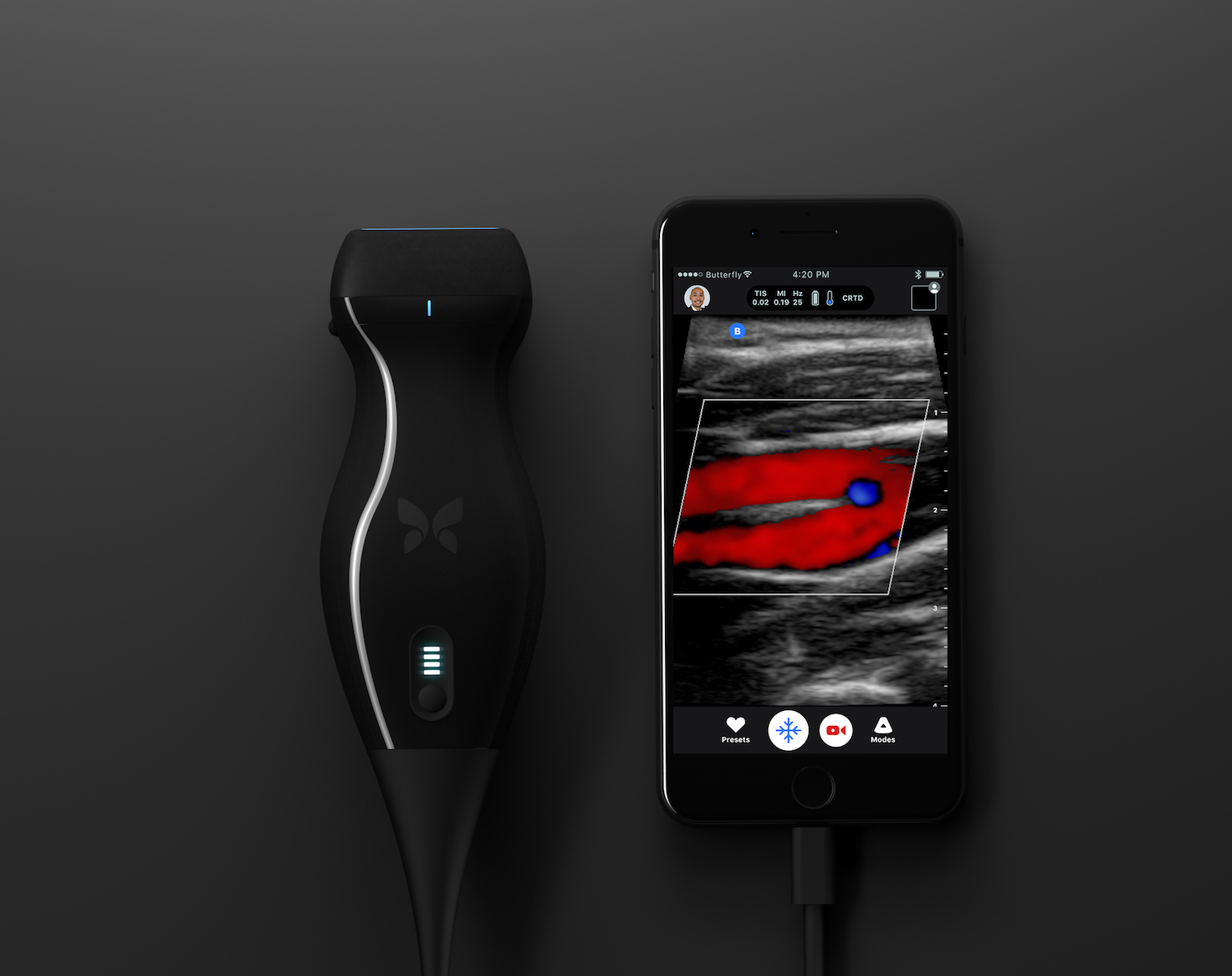iPhones have changed the way people communicate, socialize and connect for the past decade. Now, iPhones are changing medicine.
The new Butterfly iQ, created by the Butterfly Network, is a small imaging device for ultrasounds that is compatible with iPhones. It speeds up the diagnosis process by putting the power of modern day medical technology right in the doctor’s pocket, so patients can get the care they need right away.
One doctor even diagnosed his own cancer using the device.
“I felt something in my neck, connected the probe to my phone, did an ultrasound, and there it was. My tumor,” said Dr. John Martin, chief medical officer for Butterfly Network, in a video on the company website.
In the video, Dr. Martin talks about the many times when he would have to tell a family, “If only I could have gotten there sooner. If only we had made the diagnosis sooner.”
Now, the Butterfly iQ cuts down on the waiting game so patients can be on the road to recovery faster.
“That ‘if only’ is now this device in our hands. In the doctor’s hands the moment you roll into the emergency room. The moment you go to a clinic. They don’t have to order a study, the study is in their pocket,” Dr. Martin said in the video.
The device gained FDA approval in late October 2017 as the first “Ultrasound-on-a-Chip.” The device starts shipping in early 2018.
How It Works
The Butterfly iQ combines nearly 10 thousand sensors, which is 40 times more than some systems priced 100 times higher.
Here’s what Butterfly Network said makes their device revolutionary:
To image the entire body, a traditional ultrasound system requires a large, expensive cart or box which connects to three or more piezoelectric-based transducers, each costing thousands to tens of thousands of dollars. Butterfly's Ultrasound-on-a-Chip technology combines the capabilities of the typical three probes into a single ultra wide-band, 2D matrix array comprised of thousands of microelectromechanical systems (MEMS). These sensors are directly overlaid on an integrated circuit encompassing the electronics of a high performance ultrasound system. The acoustic bandwidth and processing power available from the MEMS and electronics fusion creates unprecedented diagnostic versatility, speeds, modes, and resolutions. Moving the ultrasound machine to a chip allows it to be produced at unprecedented scales, at prices and rates of improvements that obey Moore's law and will enable a series of future form factors.
This ultrasound device also learns. Butterfly Network developed learning-based artificial intelligence applications to assist clinicians with image acquisition and interpretation.
"Deep learning and ultrasound imaging are a perfect combination," said Butterfly Network President Gioel Molinari in a press release. "As physicians use our devices in the field, they help improve the neural network models. The more physicians use Butterfly devices, the better they will get. Improvements to acquiring and interpreting images will ultimately enable less skilled users to reliably extract life-saving insight from ultrasound."
Butterfly Network plans to release assistance and interpretation functionality in 2018 as a software add-on to the Butterfly iQ, according to a press release.
The accessibility of this device is what doctors are most excited about.
"Just as putting a camera on a semiconductor chip made photography accessible to anyone with a smart phone and putting a computer on a chip enabled the revolution in personal computing before that, Butterfly's Ultrasound-on-a-Chip technology enables a low-cost window into the human body, making high-quality diagnostic imaging accessible to anyone," said Dr. Jonathan Rothberg, founder and chairman of Butterfly Network, in a press release.
Since the Butterfly iQ sells for under $2,000, healthcare practitioners have increased access to the tools they need.
"By removing the barrier of price, I expect Butterfly to ultimately replace the stethoscope in the daily practice of medicine,” Dr. Martin said in a press release. “We can now provide a diagnostic system to address the millions of children that die of pneumonia each year and the hundreds of thousands of women that die in childbirth, and these are just two examples of the impact this technology will have."
Technology can bridge the gap between modern day health care and affordability.
"Two thirds of the world's population has no access to medical imaging, that's not ok, and today our team is doing something about it,” Dr. Rothberg said. “And they are just getting started."
Reactions
Based on testimonials on the Butterfly Network website, medical students, doctors and educators all believe this device revolutionizes ultrasound.
Dr. J. Christian Fox, professor of emergency medicine at UC Irvine School of Medicine, said this device revolutionizes the ultrasound playing field. He said doctors usually order a study from radiology because they don’t know where the machine is, but that is all going to change.
“Having the machine in your pocket and having it be any one of the three transducers… you’re really just saying there’s no more excuses,” Dr. Fox said.
Dr. John Kendall, director of emergency ultrasound at Denver Health, said the struggle with technology is always, access. Another hurdle is that devices are usually not well-designed for emergency department situation, he said.
With the Butterfly iQ, he doesn’t have to decide on which application or transducer.
“If I want to go from head to toe, I can do it,” Dr. Kendall said about the Butterfly iQ.

